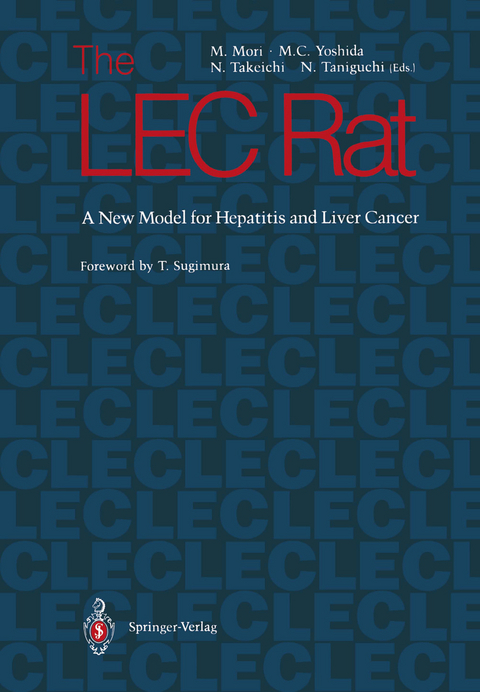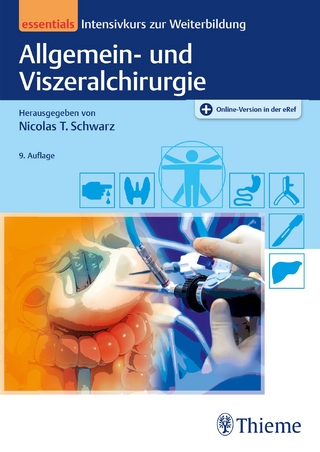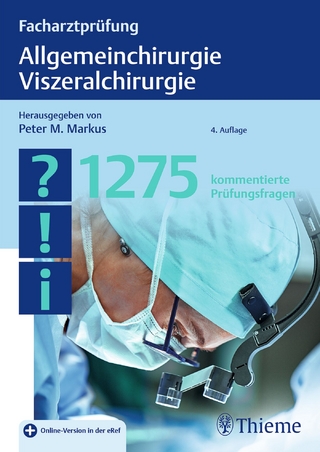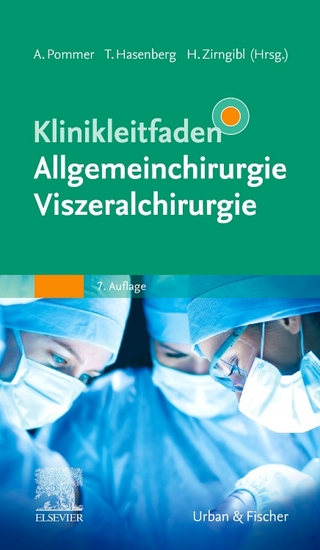
The LEC Rat
Springer Verlag, Japan
978-4-431-68155-7 (ISBN)
1 Establishment and Natural History.- 1 Origin of the LEC Strain with a New Mutation Causing Hereditary Hepatitis.- 2 Reproductive Performance and Effects of Pregnancy on the Acute Phase of Hepatitis in LEC Rats.- 3 Differences in the Course of Hereditary Hepatitis Between Males and Females, and Between Virgins and Parous Female LEC Rats.- 4 Pathological and Laboratory Findings of “LEC/Otk” Rats Maintained Under SPF Conditions.- 5 Clinical and Pathological Characteristics of LEC Rats with Spontaneous Hepatitis.- 6 High Susceptibility to Spontaneous Development of Hepatocellular Carcinoma in LEC Rats.- 2 Hepatitis.- 1. Pathology.- 7 Investigation of Infectious Agents Causing Spontaneous Hepatitis in LEC Rats.- 8 Possible Involvement of Abnormal Cytokinesis and Karyokinesis in the Manifestation of Hepatitis in LEC Rats.- 9 Sensitivity of LEC Rats to the Hepatotoxic Effects of D-Galactosamine.- 10 Consecutive Follow-up Study of the Liver of LEC Rats Before the Onset of Spontaneous Hepatitis.- 11 Acute Tubular Necrosis in LEC Rats with Hereditary Hepatic Failure—A New Animal Model of Hepatorenal Syndrome.- 12 Inhibitory and Intensifying Effects of Long-Term Exposure to Chemicals on Spontaneous Hepatic Injury in LEC Rats.- 2. Biochemistry.- 13 Abnormal Copper Accumulation in the Liver of LEC Rats: A Rat Form of Wilson’s Disease.- 14 Hereditary Low Levels of Plasma Ceruloplasmin in LEC Rats.- 15 Differential Expression of Mn- and Cu, Zn-Superoxide Dismutases in Various Tissues of LEC Rats.- 16 Decreased Activities of S-Adenosylmethionine Synthetase Isozymes in Hereditary Hepatitis in LEC Rats.- 17 LEC Rats Mimic LEA Rats Fed a Choline-Deficient Diet.- 18 Hypomethylation-Associated Expression of Cytochrome P-450 and ?-Glutamyl Transpeptidase During HereditaryHepatocarcinogenesis in LEC Rats.- 19 Abnormal Lipid Metabolism in LEC Rats.- 20 Identifications of Carbonic Anhydrase III and Triosephosphate Isomerase in the Liver Proteins in LEC Rats on Two-Dimensional Gel Electrophoresis.- 21 Two-Dimensional Electrophoretic Analysis of Cellular Polypeptides from Livers of LEC Rats.- 3. Immunology.- 22 Combined Immunodeficiency in LEC Rats with Spontaneous Hepatitis.- 23 Genetic Analysis of Immunodeficiency and Hereditary Hepatitis in LEC Rats.- 24 Remarkable Reduction of Serum IgG2a Subclass in LEC Rats.- 25 Genetic Analysis of IgG Deficiency and T-Helper Immunodeficiency in LEC Rats.- 26 Arrest of Maturation of Helper T Cells in LEC Rats.- 3 Liver Cancer.- 1. Cytogenetics and Oncogenes.- 27 Chromosomal Analysis of Spontaneous Hepatomas, a Derived Cell Line, and Chemically Induced Hepatomas in LEC Rats.- 28 Drug-Metabolizing Ability and Inducibility of Chromosomal Aberrations and Sister Chromatid Exchanges in LEC Rats Exposed to Cyclophosphamide.- 29 Altered Oncogene Expression in Hepatocellular Carcinomas Developing Spontaneously in LEC Rats.- 2. Pathology.- 30 Progress from Chronic Hepatitis to Liver Cancer in Long-Surviving LEC Rats.- 31 Neoplastic and Non-Neoplastic Lesions in Aging LEC/Otk Rats.- 32 The Multistep Nature of Spontaneous Liver Cancer Development in the LEC Rat: Analysis of Incidence and Phenotype of Preneoplastic and Neoplastic Liver Lesions.- 33 High Sensitivity of LEC Rats to Carcinogens Based Upon a Short-Term Carcinogenicity Assay.- 34 Replicative and Unscheduled DNA Synthesis of LEC Rat Hepatocytes: Relevance to Natural Development of Hepatocellular Carcinoma.- 3. Biochemistry.- 35 Hepatoma-Associated Alterations of Serum ?1-Antitrypsin in LEC Rats.- 36 High Expression of Hexokinase Isozyme B DuringHepatocarcinogenesis in LEC Rats.- 37 Chromosomal Mapping of the Placental Glutathione S-Transferase Gene and Its Expression in Livers of LEC Rats.
| Zusatzinfo | XVI, 356 p. |
|---|---|
| Verlagsort | Tokyo |
| Sprache | englisch |
| Maße | 170 x 244 mm |
| Themenwelt | Medizinische Fachgebiete ► Chirurgie ► Viszeralchirurgie |
| Medizinische Fachgebiete ► Innere Medizin ► Gastroenterologie | |
| Medizinische Fachgebiete ► Innere Medizin ► Hepatologie | |
| Medizin / Pharmazie ► Medizinische Fachgebiete ► Onkologie | |
| ISBN-10 | 4-431-68155-8 / 4431681558 |
| ISBN-13 | 978-4-431-68155-7 / 9784431681557 |
| Zustand | Neuware |
| Haben Sie eine Frage zum Produkt? |
aus dem Bereich


